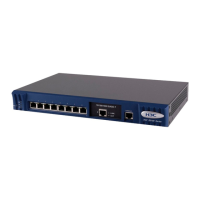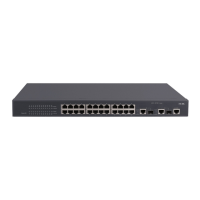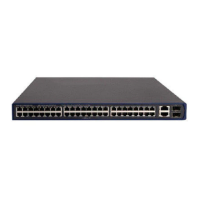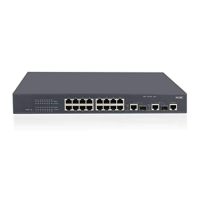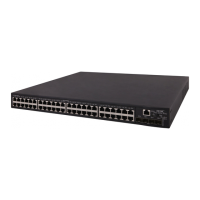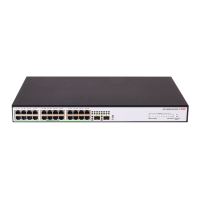1-22
Examples
# Enable a switch to send trap messages conforming to 802.1d standard to the network management
device when the switch becomes the root bridge of MSTI 1.
<Sysname> system-view
System View: return to User View with Ctrl+Z.
[Sysname] stp instance 1 dot1d-trap newroot enable
stp edged-port
Syntax
z Ethernet port view:
stp edged-port { enable | disable }
undo stp edged-port
z System view:
stp interface interface-list edged-port { enable | disable }
undo stp interface interface-list edged-port
View
System view, Ethernet port view
Parameters
enable: Configures the port as an edge port.
disable: Configures the port as a non-edge port.
interface-list: Ethernet port list. You can specify multiple Ethernet ports by providing this argument in the
form of interface-list = { interface-type interface-number [ to interface-type interface-number ] } &<1-10>,
where &<1-10> means that you can provide up to 10 port indexes/port index ranges for this argument.
Description
z Use the stp edged-port enable command to configure the current Ethernet port as an edge port.
Use the stp edged-port disable command to configure the current Ethernet port as a non-edge
port. Use the undo stp edged-port command to restore the current Ethernet port to its default
state.
z Use the stp interface edged-port enable command to configure the specified Ethernet ports as
edge ports in system view. Use the stp interface edged-port disable command to configure the
specified Ethernet ports as non-edge ports in system view. Use the undo stp interface
edged-port command to restore the specified Ethernet ports to the default state.
By default, all Ethernet ports of a switch are non-edge ports.
An edge port is a port that is directly connected to a user terminal instead of another switch or shared
network segment. Rapid transition to the forwarding state (sometimes referred to as “Fast Start”) is
applied to edge ports because on these ports no loops can be incurred by network topology changes.
You can enable a port to turn to the forwarding state rapidly by setting it to an edge port. And you are
recommended to configure the Ethernet ports directly connected to user terminals as edge ports to
enable them to turn to the forwarding state rapidly.
